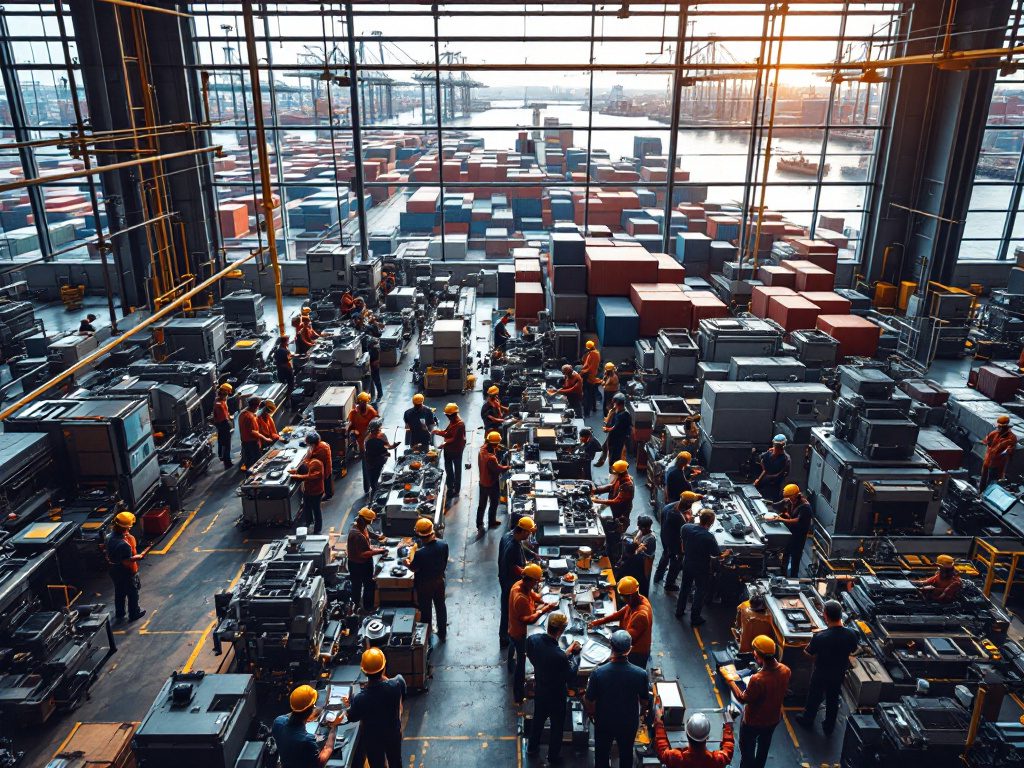Steel, Tariffs, and the Spectacle of American Revival
You could almost hear the clang of ambition ringing through the lowcountry air as Vice President JD Vance strode into the cavernous Nucor Steel Berkeley mill in Huger, South Carolina. The event, framed as a celebration of the Trump administration’s self-declared “manufacturing renaissance,” marked the administration’s first 100 days. Tagging along was EPA Administrator Lee Zeldin, a presence meant to underscore this administration’s assertion that industry and environmental stewardship can march arm in arm—despite the uneasy truth that deregulation has too often left workers and residents breathing dirtier air or drinking contaminated water.
Nucor’s CEO Leon Topalian was quick to roll out the red carpet, touting the company’s $16 billion commitment to factory investments nationwide, including a $425 million galvanizing line right there in Berkeley County. His message, echoed confidently by administration officials: tariffs on foreign steel and aluminum will supercharge domestic production, bring back jobs lost to globalization, and strengthen national security by keeping raw materials at home. “We have the ability to ramp up and down very quickly, within minutes,” Topalian said, striking a note of self-assurance few can miss.
But beneath the bullish optimism lies a bruising political battle vexing economists and ordinary Americans alike. Is this truly the birth of a new era for American industry—or another instance of economic theater that risks burdening working families with higher prices down the line?
The Real Impact of Steel Tariffs: Winners, Losers, and Unanswered Questions
Advocates for steel tariffs claim that restricting imports will reduce foreign market manipulation and level the playing field for U.S. manufacturers. Conservative leaders like South Carolina GOP Chairman Drew McKissick have seized on these policies, branding them as evidence of a ‘Promises Made, Promises Kept’ agenda. “We’re creating good paying jobs, protecting our borders, even banning DEI policies and protecting women’s sports,” McKissick boasted—an odd but revealing mix that hints at the broader culture war framing embedded in today’s manufacturing rhetoric.
The Trump administration’s defenders argue that strong tariffs are the backbone of economic patriotism. Nucor, after all, employs thousands in above-average wage roles, providing steel for everything from tanks to bridges. The theory sounds compelling: By cutting imported steel’s market share from 25% to just 10%, the administration says it can push domestic production from its current 70% of capacity to heights not seen since the postwar boom.
There’s historical resonance here. Remember how, in the early 1980s, Ronald Reagan’s targeted steel tariffs provided symbolic protection—yet ultimately failed to resuscitate jobs as foreign rivals undercut prices and automation displaced workers? Harvard economist Jason Furman reminds us, “Tariffs can temporarily boost profits for select sectors, but over the long term, they act as a tax on everyone else, raising prices for cars, appliances, and construction projects across the nation.”
“Tariffs can temporarily boost profits for select sectors, but over the long term, they act as a tax on everyone else, raising prices for cars, appliances, and construction projects across the nation.”
— Harvard economist Jason Furman
The numbers underscore the caution. According to the Peterson Institute for International Economics, the Trump-era steel tariffs cost American consumers and downstream manufacturers more than $900,000 for every job saved in the steel sector. Is that the kind of renaissance we truly seek?
Beneath the Rhetoric: Human Realities and a Smarter Path Forward
For the workers on Nucor’s factory floor, the story remains complicated. Good manufacturing jobs are indeed vital for many American communities hollowed out by decades of offshoring. Yet for every welder or operator hired, dozens of small manufacturers—who buy steel to forge parts for tractors, kitchen stoves, or even playgrounds—feel the sting of rising costs. When raw materials get expensive, it’s middle-class families that invariably foot the bill, either through higher prices at the store or fewer jobs at mom-and-pop factories struggling to compete.
Beyond that, the spectacle of Vice President Vance flanked by environmental officials feels almost surreal given the administration’s systematic rollback of climate and pollution protections. A closer look reveals that true economic renewal must include investment in clean energy, worker retraining, and education—not just new factory lines or photo-ops in gleaming steel mills.
Outside the plant gates, many South Carolinians are asking what this so-called renaissance really delivers. According to a recent Pew Research Center study, most Americans rank health care, education, and renewable energy investment as higher priorities for federal attention than manufacturing subsidies or trade wars. And, as the climate crisis accelerates, green jobs offer the promise of both prosperity and planetary survival—a point made forcefully by former Energy Secretary Jennifer Granholm when she said, “If we want real security and thriving communities, it’s time to bet big on clean manufacturing, not just old industries wrapped in new slogans.”
For progressive policymakers and advocates of social justice, industry policy must mean more than tariffs and tough talk. It demands that we question who really benefits—and whether our most vulnerable citizens are being left with nothing but a bill for someone else’s campaign photo op. If we are truly committed to a 21st-century renaissance, that vision must prioritize equity, environmental stewardship, and broad prosperity—not just short-term wins for a select few.

